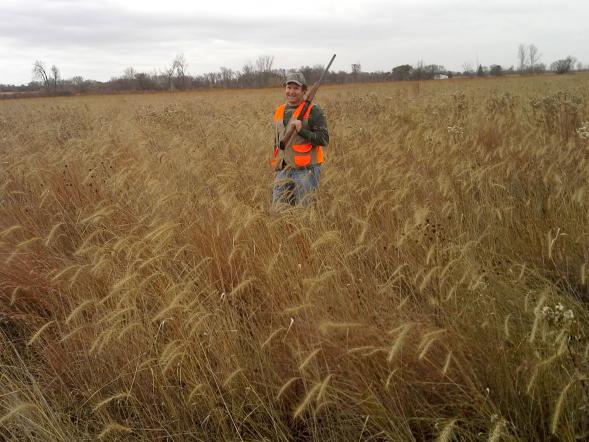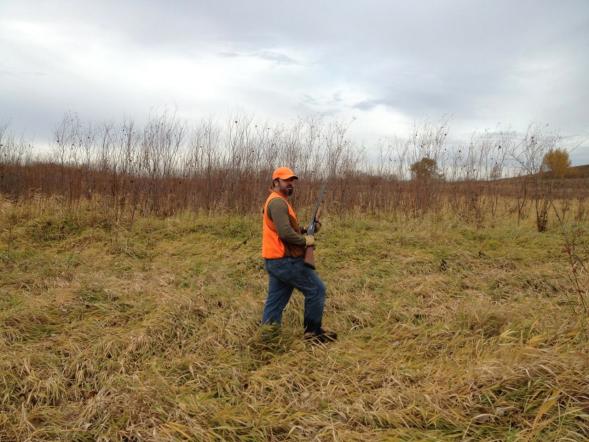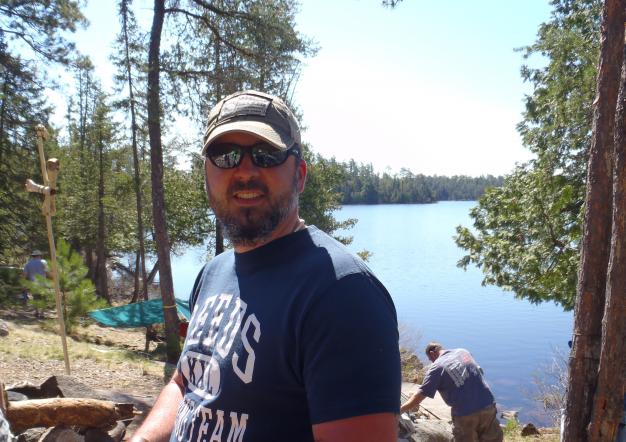This is the third post in a series about hunting for food -- truly meeting your meat. Also check out the earlier posts from the series, Duck Hunting and Squirrel Hunting with Mom.
There is an old saying that goes: A bad day of hunting beats a good day of work every time. I don’t know if that saying is true because I don’t think I have ever had a bad day of hunting. I have had unsuccessful days -- a lot of unsuccessful days -- but I wouldn’t call any of them bad. Most of my successes have been in duck hunting and deer hunting; if there is an area of hunting where I wish I could have more success, it would be hunting upland game birds, specifically pheasant hunting. I have spent more days afield unsuccessfully chasing pheasants than any other animal. To be completely honest, over my lifetime, I have been out pheasant hunting probably two hundred times and in all that time I have shot only two pheasants.
There are many reasons that I could point to for this lack of success. I could blame the state of Minnesota for not having a better pheasant population or enough public land to hunt. I could blame some of my hunting partners over the last twenty years for not having good control of their dogs. I could blame myself for not having a dog. I am sure I could go on and on about who is to blame, but in the long run, it all comes back to me being a lousy pheasant hunter.
Over my years of failure, I have learned a few things that make for good pheasant hunting. The first is: location. Pretty simple: you have to be hunting some place where there are lots of pheasants.
 The second is paying attention to the
type of cover you will be hunting. By “cover,” I mean the terrain where you’ll
be hunting: whether the grass is short or tall, whether you are hunting picked
crop fields, swamps, wood lines, ditches, etc. I remember hunting one pheasant
opener with my brother when we drove down to Leroy, MN. We got to our chosen
field very early that morning hoping that we would be the first ones to walk it
that day. In Minnesota you have to wait until 9 a.m. before you can start
hunting pheasants. We sat and watched this field for about two hours and for
two hours we watched pheasants fly in and out of this field. We were both giddy
with anticipation and right at 9 a.m. we started walking this field. As we got
further and further into the field we started to realize why the pheasants were
going in and out. The cover was so thick and dense that we could barely walk
through it. My brother’s dog
actually got stuck in the grass and had a hard time moving through it. Our
excitement faded and turned into two hours of the toughest walking I have ever
done. We didn’t see a single bird once we started walking, and we came home
tired and empty handed.
The second is paying attention to the
type of cover you will be hunting. By “cover,” I mean the terrain where you’ll
be hunting: whether the grass is short or tall, whether you are hunting picked
crop fields, swamps, wood lines, ditches, etc. I remember hunting one pheasant
opener with my brother when we drove down to Leroy, MN. We got to our chosen
field very early that morning hoping that we would be the first ones to walk it
that day. In Minnesota you have to wait until 9 a.m. before you can start
hunting pheasants. We sat and watched this field for about two hours and for
two hours we watched pheasants fly in and out of this field. We were both giddy
with anticipation and right at 9 a.m. we started walking this field. As we got
further and further into the field we started to realize why the pheasants were
going in and out. The cover was so thick and dense that we could barely walk
through it. My brother’s dog
actually got stuck in the grass and had a hard time moving through it. Our
excitement faded and turned into two hours of the toughest walking I have ever
done. We didn’t see a single bird once we started walking, and we came home
tired and empty handed.
Finally, the last thing you need for a successful pheasant hunt is a good dog. It is possible to hunt pheasants without one, but a well-trained dog makes the hunt a lot easier and decreases the chance of losing a bird that might be wounded. I used to have a dog for pheasant hunting, but I only had him for three years before I had to give him away because of some military deployments. Now I try to go pheasant hunting with friends of mine who have dogs, but that isn’t always possible. If you can get four or five folks together it is possible to walk in a line through fields and flush pheasants but it isn’t always possible to get five people together.
What I am left with is basically taking a hike through some fields and hoping to flush a few birds. Last week, my good friend Shawn and I did that and walked for several hours in the rain and wind hoping to jump a few roosters (male pheasants). We were hunting some state land about five minutes south of Rosemount, MN. The terrain is perfect for pheasant hunting: rolling hills with grass that is about knee high with thick patches of brush and shrubs to add extra cover. The hills are surrounded by fields of picked corn, and I have seen pheasants out there before when I was dove hunting.
 The whole
time I was walking, I was thinking about writing this post. I was in one of
those great situations where if I got a pheasant I would be able to write about
another successful hunt. I was also thinking that if I didn’t get anything it
would give me the opportunity to write about an unsuccessful day of hunting.
Either way I would have something to write about. Sometimes when we talk about
hunting we only talk about the best days we have had out in the woods or swamps
or fields. I think it is important to talk about the days we didn’t get
anything, as well; for the majority of hunters, there are far more unsuccessful
days than there are successful ones. And even though my success in pheasant
hunting has been limited, I still find myself drawn back out there hoping that
I will get one more shot.
The whole
time I was walking, I was thinking about writing this post. I was in one of
those great situations where if I got a pheasant I would be able to write about
another successful hunt. I was also thinking that if I didn’t get anything it
would give me the opportunity to write about an unsuccessful day of hunting.
Either way I would have something to write about. Sometimes when we talk about
hunting we only talk about the best days we have had out in the woods or swamps
or fields. I think it is important to talk about the days we didn’t get
anything, as well; for the majority of hunters, there are far more unsuccessful
days than there are successful ones. And even though my success in pheasant
hunting has been limited, I still find myself drawn back out there hoping that
I will get one more shot.
Luckily for me, I don’t have to be successful in order to enjoy eating pheasant. I have a friend who heads out to South Dakota every year and has had a lot of success out there. He gives me several birds every year; this year he gave me five roosters and I used them all to make a pheasant meatloaf.
Pheasant Meatloaf
Adapted from Emeril Lagasse
Serves 6
Ingredients:
2 pounds ground pheasant
2 eggs
2 tablespoons Dijon mustard
1 cup bread crumbs
1 tablespoon Worcestershire sauce
2 ribs celery (diced)
1 small yellow onion (diced)
1 green pepper (diced)
4 cloves garlic (minced)
2 tablespoons butter
1 sprig rosemary
5 sprigs thyme
Salt and pepper
Instructions:
1. Sauté together the onion, pepper,
celery, and garlic in butter until soft, about 5-7 minutes season with salt and
pepper.
2. Mix together the ground pheasant, eggs, mustard, Worcestershire, and 1 tablespoon of salt.
3. Add the sautéed vegetables to the
meat mixture and combine.
4. Pack the mixture into a well-greased loaf pan and bake on 375 for 50 minutes, check the internal temp of the loaf and make sure it has reached 160 degrees.

Jamie Carlson lives in Burnsville, MN with his wife, Amanda, and their two kids Eleanor and Charlie. He works as an Rn at the Minneapolis VA hospital. He enjoys hunting, fishing, foraging, and, of course, cooking. He believes that all food can be tasty if it is prepared with care, and he writes about his adventures cooking everything from Pickled Venison Heart to Roasted Dove on his food blog, You Have to Cook it Right. Follow him at @youcookitright. His last post for SGT was Hunting for Dinner: Duck Hunting.




